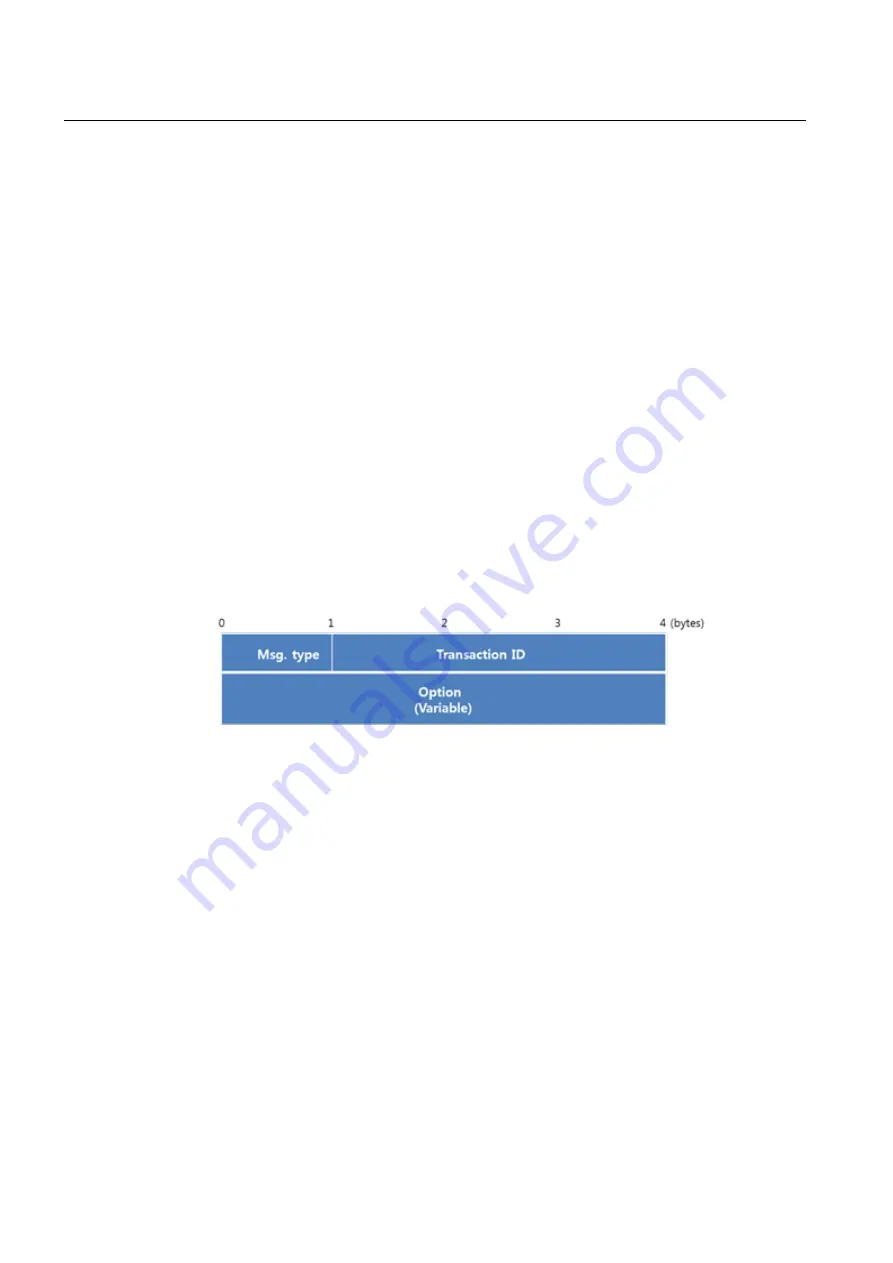
UMN:CLI
User Manual
V8102
430
Message types from client to server
- Solicit, Request, Confirm, Renew, Rebind, Release, Decline, Information-request
Message types from server to client
- Advertise, Replay, Reconfigure
Message type from relay to relay/server
- Relay-forward
Message type from relay/server to relay
- Relay-reply
DHCPv6 Client-Server Message
DHCP servers communicate with DHCP clients by a series of DHCP messages. The Msg.
Type field (1-byte) indicates the type of DHCPv6 message. The Transaction ID field (3-
byte) is determined by a client and used to group the messages of a DHCPv6 message
exchange together. Following the Transaction-ID field, DHCPv6 options are used to indi-
cate client and server identification, addresses, and other configuration settings. For the
list of defined DHCPv6 options, see RFC 3315. DHCPv6 options are formatted with the
type-length-value (TLV) format.
The following figure shows the structure of DHCPv6 messages sent between client and
server.
Fig. 9.40
Basic DHCPv6 Message Format
DHCPv6 Relay agent-Server Message
DHCP relay agent is a node that acts as an intermediary to deliver DHCP messages be-
tween clients and servers, and is on the same link as the client. If there is a relay agent
between the client and the server, the relay agent sends the server Relay-Forward mes-
sages containing the encapsulated Solicit and Request messages from the client. The
server sends the relay agent Relay-Reply messages containing the encapsulated Adver-
tise and Reply messages for the client.
There is a separate message structure for the messages exchanged between relay
agents and servers to record additional information.
















































